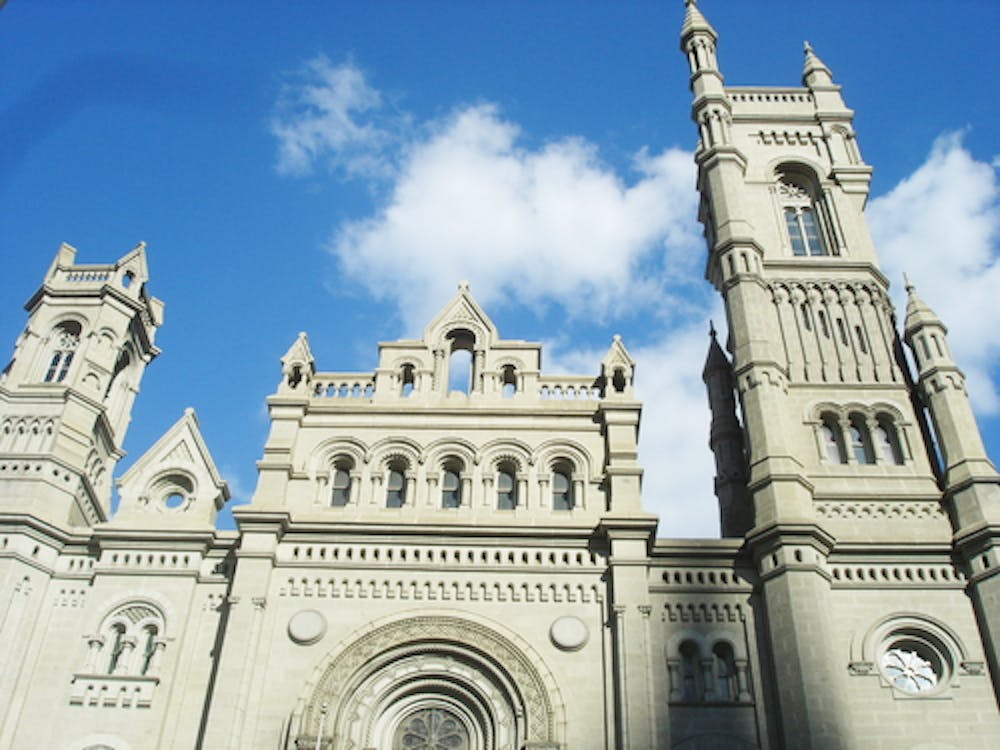Elfreth’s Alley (Between Front & 2nd Streets and Race & Arch Streets)
Ever wonder what the streets might have looked like back when Benjamin Franklin swaggered around Philly? Elfreth’s Alley, the nation's oldest residential street, is the place to check out. The alley has been home to over 3,000 individuals since its founding in 1702, including English colonists, founding members of Philly’s Jewish community and freed slaves. Be sure to visit the museum dedicated to this historic alley, located in the middle of the street. If you want more than just history, you'll also find a passageway which leads to a secluded, romantic courtyard-—impress a date with yo' knowledge.
Anthropologie (1801 Walnut St.)
Even if you don't shop at Anthropologie, you'll find this flagship store housed in a grand, 19th century former mansion impressive. It was commissioned to be built in 1898 by Sarah Drexel Fell (daughter of Anthony Drexel, founder of Drexel University-—hissss), who later moved in to the Neoclassical–style mansion with her second husband, Alexander van Renssalaer. Even though the interior has been mostly deconstructed over the years, the exterior showcases remnants of the old house, including ornately decorated fireplaces and lavish windows. Be sure to check out the Romanesque mantle on the second floor staircase and the opulent stain glass skylight above the staircase.
Masonic Temple (1 N. Broad St.)
Across from City Hall, this massive stone Norman–style temple dominates Broad Street with the presence of a royal castle. With the construction of 250–foot tall medieval towers, it took nearly twenty years to complete the interior and exterior of the temple. The interior of the temple depicts seven different ideal architectures which the Freemasonry thought displayed the best of human creativity. The most notable of these is the Egyptian room adorned in hieroglyphics- that makes you wish you could be buried as a pharaoh.
Wanamaker Building (13th & Market Streets)
A throwback to the department store empires of the early– to mid–20th century, the Wanamaker Building was constructed by the retail magnate John Wanamaker in 1902. The closest most of us will ever get to living the life of a "Mad Men" era shopper, the building is a massive 12–floor complex designed in the Florentine Renaissance style with extravagant granite walls and a large Grand Court. Located in the Grand Court in the center of the store is the Wanamaker Organ, the largest operational organ in the world with over 28,000 individual pipes (imagine your little sister’s first recital there… perfect?). The organ is played three times a day for all those interested.
Merchants’ Exchange Building (3rd & Walnut Streets)
For all those business types out there, the Merchants’ Exchange Building shares some cool Philly financial history. Built between 1832–1834, the Merchants’ Exchange is emblematic of the Greek Revival movement which swept the nation during this period. Reflecting a renewed focus on the ideals of Greek democracy and American republicanism, the building has classically based marble columns and stairways, with a lantern on the roof symbolizing the ever–lit hope for freedom. Over the years, the Merchants’ Exchange has held the Philadelphia Stock Exchange, a marine insurance company and a U.S. Postal office; now it is the Philly headquarters of the National Park Service.







